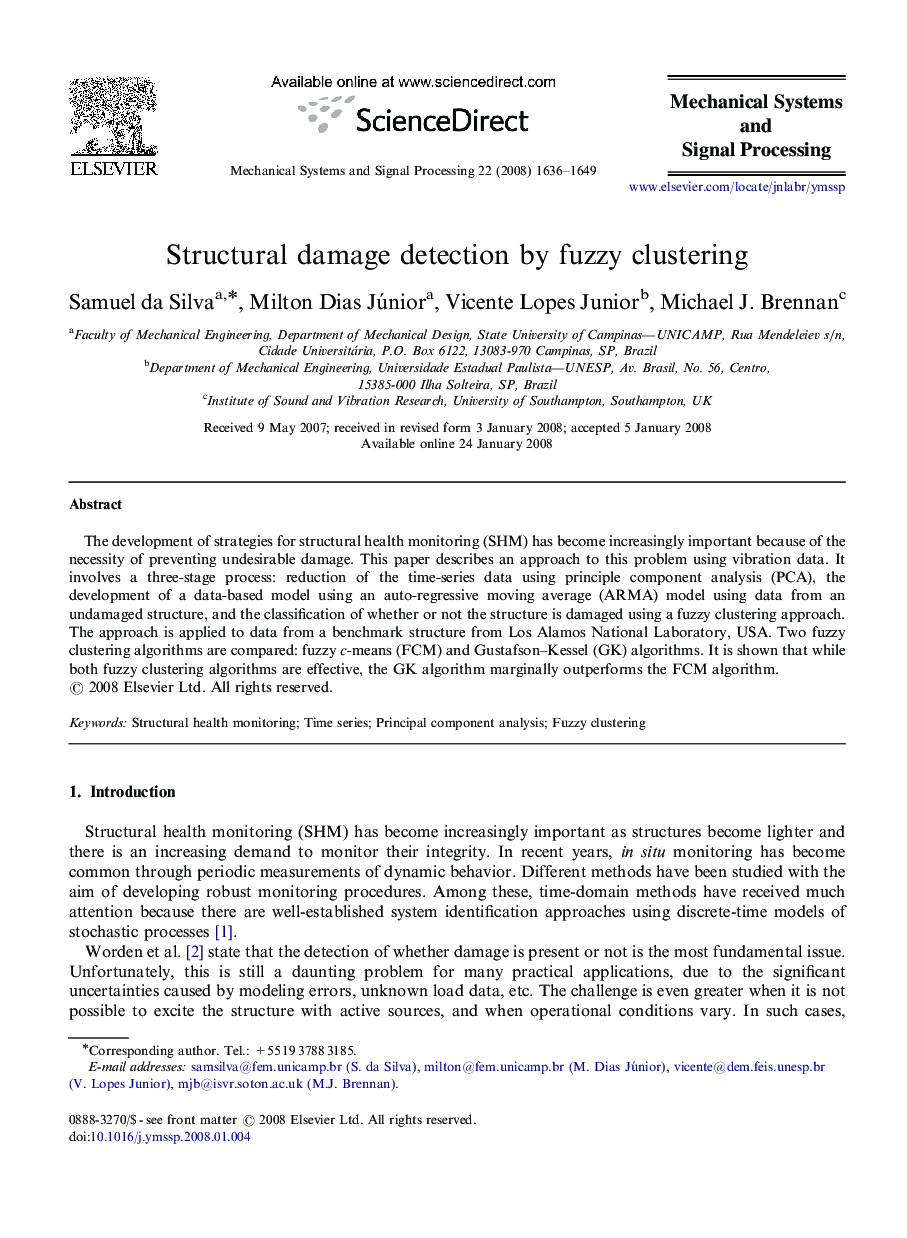| Article ID | Journal | Published Year | Pages | File Type |
|---|---|---|---|---|
| 562056 | Mechanical Systems and Signal Processing | 2008 | 14 Pages |
The development of strategies for structural health monitoring (SHM) has become increasingly important because of the necessity of preventing undesirable damage. This paper describes an approach to this problem using vibration data. It involves a three-stage process: reduction of the time-series data using principle component analysis (PCA), the development of a data-based model using an auto-regressive moving average (ARMA) model using data from an undamaged structure, and the classification of whether or not the structure is damaged using a fuzzy clustering approach. The approach is applied to data from a benchmark structure from Los Alamos National Laboratory, USA. Two fuzzy clustering algorithms are compared: fuzzy c-means (FCM) and Gustafson–Kessel (GK) algorithms. It is shown that while both fuzzy clustering algorithms are effective, the GK algorithm marginally outperforms the FCM algorithm.
